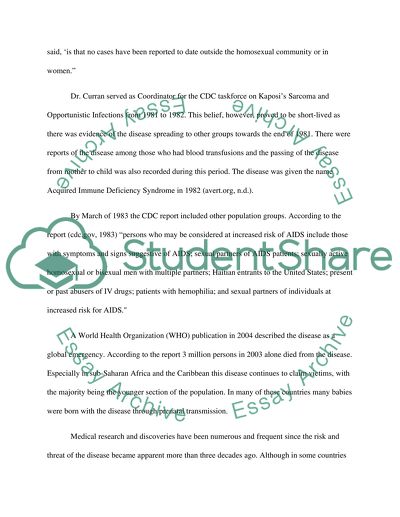Cite this document
(“HIV and AIDS Essay Example | Topics and Well Written Essays - 2250 words”, n.d.)
HIV and AIDS Essay Example | Topics and Well Written Essays - 2250 words. Retrieved from https://studentshare.org/miscellaneous/1572725-hiv-and-aids
HIV and AIDS Essay Example | Topics and Well Written Essays - 2250 words. Retrieved from https://studentshare.org/miscellaneous/1572725-hiv-and-aids
(HIV and AIDS Essay Example | Topics and Well Written Essays - 2250 Words)
HIV and AIDS Essay Example | Topics and Well Written Essays - 2250 Words. https://studentshare.org/miscellaneous/1572725-hiv-and-aids.
HIV and AIDS Essay Example | Topics and Well Written Essays - 2250 Words. https://studentshare.org/miscellaneous/1572725-hiv-and-aids.
“HIV and AIDS Essay Example | Topics and Well Written Essays - 2250 Words”, n.d. https://studentshare.org/miscellaneous/1572725-hiv-and-aids.


